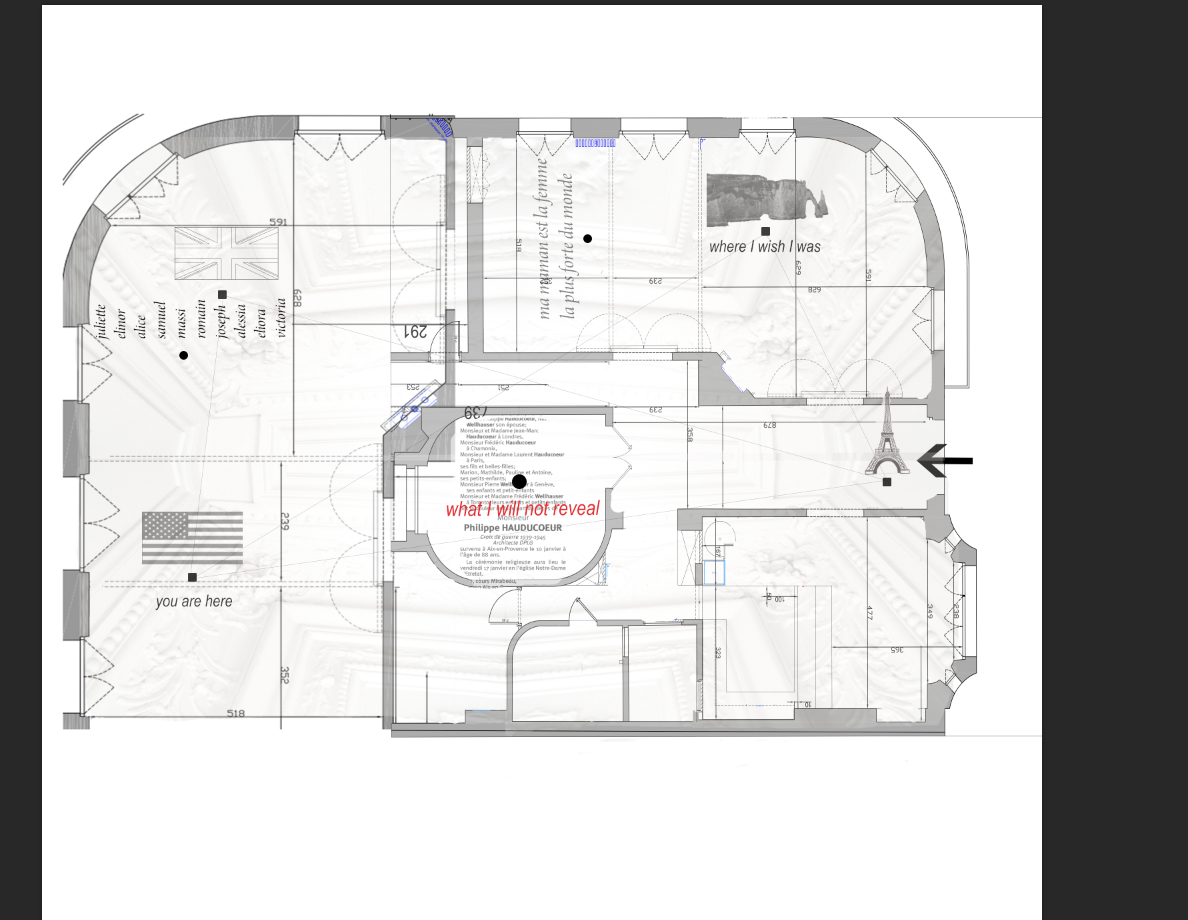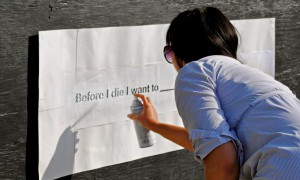
Artist Candy Chang has created a multitude of profound urban installations that reflect on the dynamics between community and isolation, and the ways “shared places can cultivate reflection, perspective, and kinship.” Chang is particularly focused on the relation between individual liberty and social cohesion, and has made great participatory public art works that seek to address this relation. With a background in urban planning, Chang has worked with communities all over the world, and approaches her art from a particular perspective that is not just of the artist. Her involvement in urban planning has forged her art in many ways that speak to the issues Martin de Waal addresses in his book The City as Interface (2014).
In investigating the ‘parochial’ and ‘public’ domains, de Waal notices how “as a result of increased mobility and the individualization of lifestyles, parochial and public domains have started to overlap more and more.” (p.16), and he explores the role of neighborhoods in modern cities through those domains. In his chapter “The Neighborhood as an ‘Interface’ in Every Day Life”, de Waal quotes Kevin Lynch’s description of the behavioral and symbolic aspects of city dwellers and the spaces they dwell in, from The Image of the City (1960): “how city dwellers, from their everyday lives also attribute symbolic meanings to places.” (p. 50) This description is essential in understanding the socio-spacial dynamics inherent to all cities and their different neighborhoods. In her works, Chang strives to attribute particular meanings to places, by blurring the line that separates individual liberty and social cohesion.
Chang’s installation “Before I Die” (2011) is a participatory public art project, through which she invited city dwellers to reflect on life and death, and share their personal aspirations, anonymously, but in a spirit of unity. This project came from Chang’s personal experience dealing with grief after losing someone she loved. Through this public piece, Chang aspired to connect with her neighbors and connect the neighborhood itself. The project was originally created on an abandoned house in her New Orleans neighborhood, which she covered in chalkboard paint. Over the paint, she stenciled the prompt “Before I die I want to _____”. The project was extremely successful and the wall quickly filled up with different yet passionate contributions from city dwellers. In fact, the project was so successful that 2000 “Before I Die” walls have been created since then all over the world in over 70 countries including Iraq, China, Brazil, Kazakhstan, and South Africa. This project is extremely powerful in the sense that it asserts how public spaces can become a platform for city dwellers to empathize with each other, even if anonymously. This project creates a communal bridge between neighbors and in a way resolves the predominant urban issue of finding the right balance between individual liberty and community building.

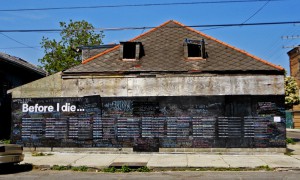
In her public installation “Grief is a Beast That Will Never Be Tamed” (2017), Chang addresses, as in “Before I Die”, the emotional concept of grief. This project came from the realization that modern society has completely turned away from displays of mourning and the contemplation of death, which leads many people to go through this extremely universal emotion in complete isolation. The project was inspired by the Crete myth of the Minotaur and the first installation was created in Heraklion, Greece, in 2017. This installation invites people to meditate on the concept of loss and grief and attempts to provide a public ground for shared experiences. The collage that accompanies the text is built from pieces Renaissance and Baroque paintings, including The Entombment of Christ by Giovanni Francesco Barbieri (1656); Salome with the Head of John the Baptist by Caravaggio (1609); and Michelangelo’s Pietà (1499). Here again, through a beautiful and poignant piece of art, Chang strives to reconcile the private domain of the psyche and public domain of collectivity through the universal experience of grief, death and life.
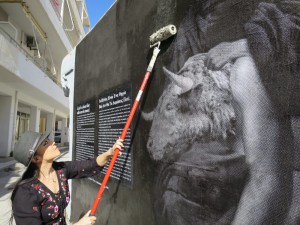
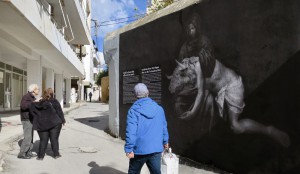
Chang’s installation “The Atlas of Tomorrow: A Device for Philosophical Reflection” (2016), is an interactive mural that offers an opportunity for self-reflection and guidance in a society where emotional well-being is far too often disregarded and swept under the rug. City dwellers who walk past this mural in Philadelphia, where the installation was created, are invited to spin a dial to select one of the sixty-four fables along the wall for introspective guidance. This project was designed through the idea of art as meditation, and is composed of numerous stories and artworks that speak to the inner turmoil one is often forced to experience alone, without guidance. The installation consists of over 200,000 dots finger painted by Chang and the Philadelphia community. In that sense, the creation of the project is itself an act of meditation on what it means to belong to a larger group of human beings, and how we all shape each other in various ways. This project is extremely touching and offers a hopeful perspective on the place of humanity in modern society.

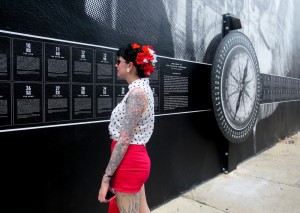
Through her artworks, Chang offers a creative yet highly philosophical contribution to urban life. In many ways, her pieces help develop a “web of public respect and trust”. (p. 52) It seems as though Chang aligns with sociologist Jane Jacob’s perspective: “Jacobs considered it important to achieve a certain harmonization between a neighborhood’s private, parochial and public domains.” (p. 53) Chang’s contributions to the urban landscape seem to offer a perfect balance between the private, parochial and public domain, through experiences that are highly individual yet extremely communal and powerful.


